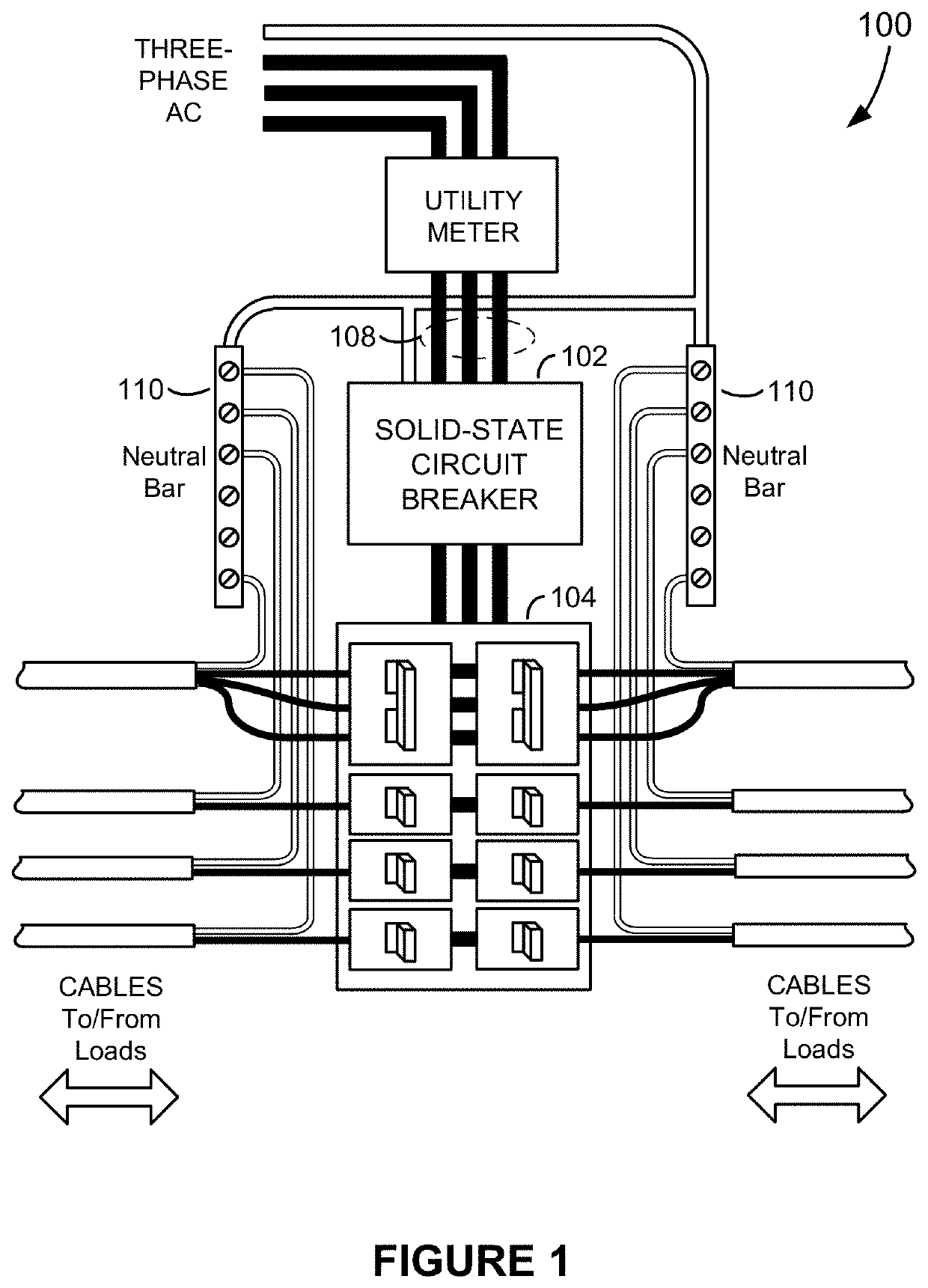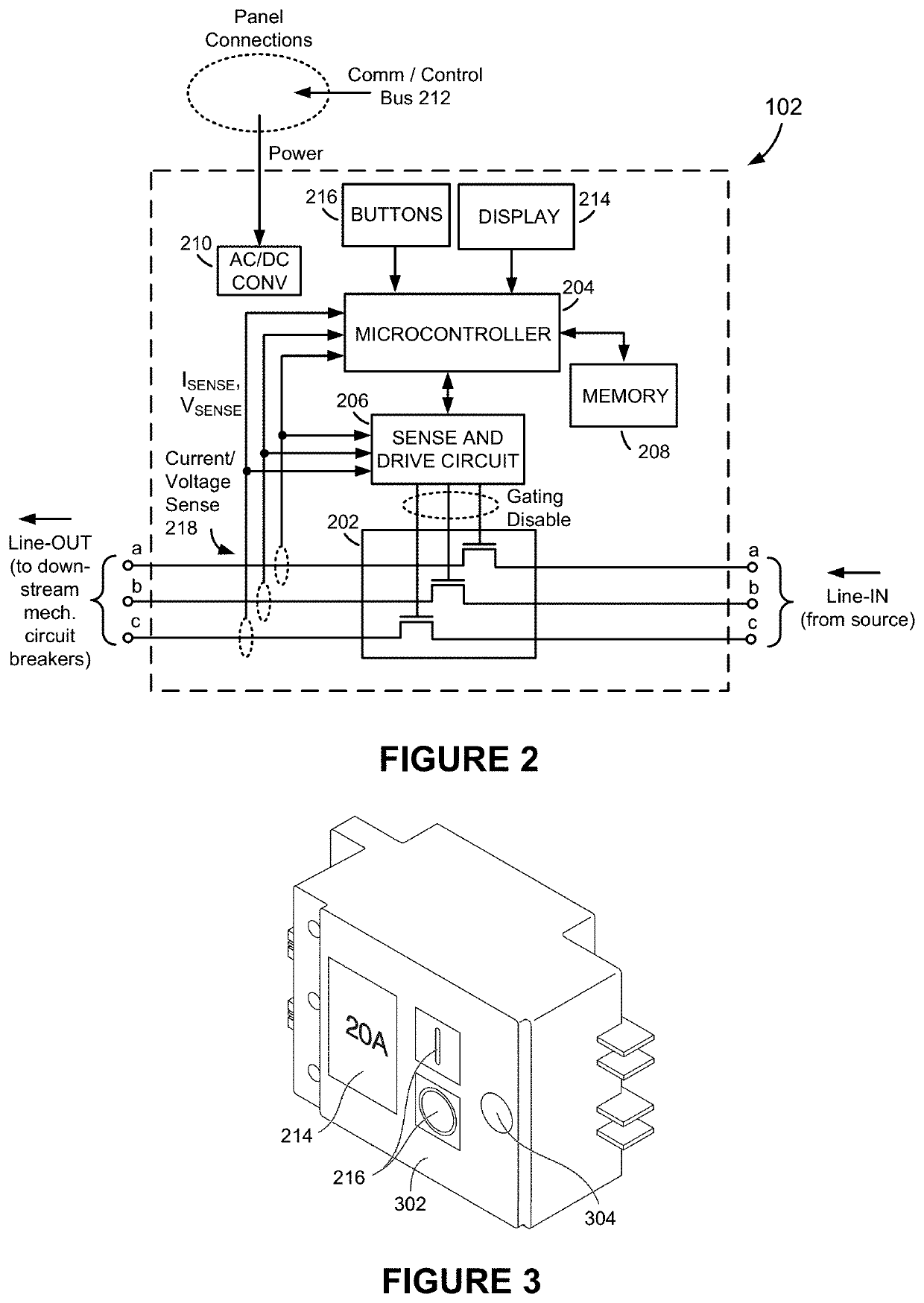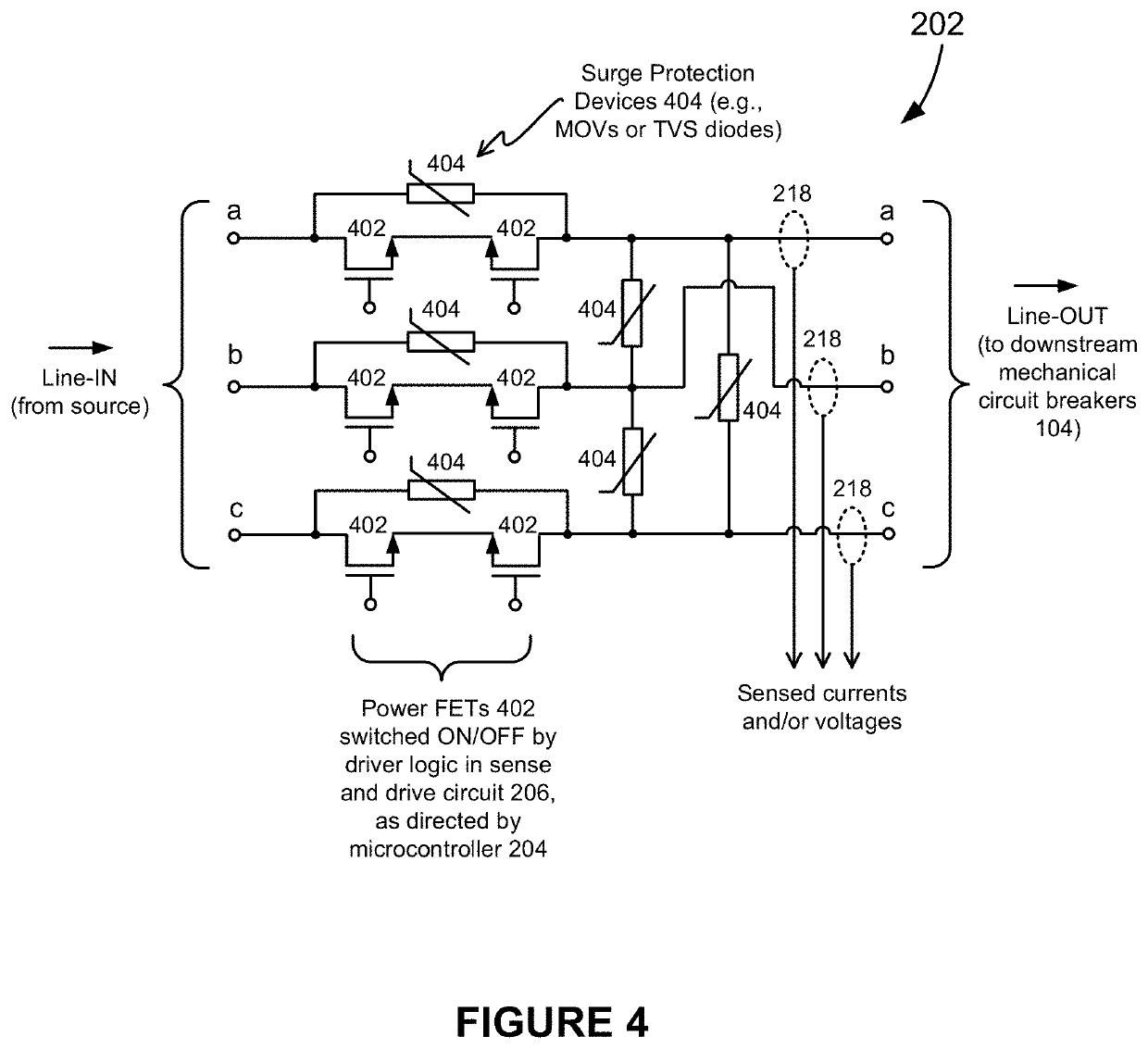Selective Coordination of Solid-State Circuit Breakers and Mechanical Circuit Breakers in Electrical Distribution Systems
a technology of mechanical circuit breakers and electrical distribution systems, applied in the direction of emergency protective arrangements for limiting excess voltage/current, protective switch details, protective switch operating/release mechanisms, etc., can solve the problems of slow reaction time, risk of electrical equipment damage, and the possibility of fire in the circuit's electrical wiring, so as to reduce the root-mean-square (rms) value of short circuit curren
- Summary
- Abstract
- Description
- Claims
- Application Information
AI Technical Summary
Benefits of technology
Problems solved by technology
Method used
Image
Examples
Embodiment Construction
[0024]Referring to FIG. 1, there is shown a drawing of an electrical distribution system 100, according to an embodiment of the present invention. The principal components of the electrical distribution system 100 include a solid-state circuit breaker (SSCB) 102 and a plurality of downstream mechanical circuit breakers (CBs) 104. The electrical distribution system 100 is configured to receive three-phase alternating current (AC) electrical power from an AC source, for example the AC mains. The received AC power is passed through a utility meter 106, through the SSCB102, and then distributed to a plurality of loads via the plurality of downstream mechanical CBs 104.
[0025]In the exemplary distribution system 100 depicted in FIG. 1 the SSCB 102 is configured to serve as a “main” circuit breaker. Accordingly, it has an amperage rating greater than the sum of the amperage ratings of the downstream mechanical CBs 104. As will be explained in detail below, the SSCB 102 is configured to “tr...
PUM
 Login to View More
Login to View More Abstract
Description
Claims
Application Information
 Login to View More
Login to View More - R&D
- Intellectual Property
- Life Sciences
- Materials
- Tech Scout
- Unparalleled Data Quality
- Higher Quality Content
- 60% Fewer Hallucinations
Browse by: Latest US Patents, China's latest patents, Technical Efficacy Thesaurus, Application Domain, Technology Topic, Popular Technical Reports.
© 2025 PatSnap. All rights reserved.Legal|Privacy policy|Modern Slavery Act Transparency Statement|Sitemap|About US| Contact US: help@patsnap.com



